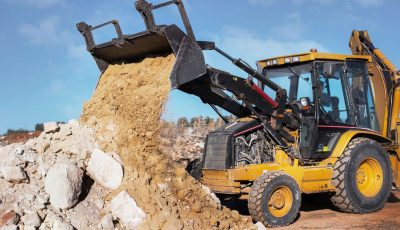Harsher penalties eyed for illegal disposal of wastewater in Garapan
The Bureau of Environmental Quality will work to beef up its regulations for illegal disposal of wastewater in the Garapan area, as they move forward to complete an interagency cleanup of the village’s storm drains before the rainy season hits in March or April.
Runoff pollution is known to cause the many hits of red flags in the Saipan lagoon over the course of the year, and especially after heavy rain—the red flags warns off people from impacted beaches as a health precaution.
In an interview, BECQ administrator Frank Rabauliman pointed to a case three years ago where a business in Garapan had illegally pumped their waste into a storm drainage that directly led out into the nearby lagoon.
While he would not disclose the violator, he called this deliberate tapping of a storm drainage as “almost criminal in nature.” But because of regulations BECQ is required to give violators time to comply, Rabauliman said. The administrator was not able to assess fines on the spot.
“We want to make sure that we don’t find ourselves in this same situation,” he told Saipan Tribune. “We are working on the regulations as we move forward with this cleanup… So we will be able to assess a fine right then and there.”
But while they hope to finish the cleanup before the rainy season hits, the bureau is also looking for funds to contract out the project.
According to Rabauliman, the project is estimated to cost $35,000. Recently, the Marianas Visitors Authority board of directors voted to co-fund half of the project, or some $15,000, in their meeting last month.
“I am very encouraged and pleased that MVA is stepping up to assist,” Rabauliman told Saipan Tribune.
He said BECQ will look within their agency for the remaining funds.
The project continues what BECQ, the Department of Public Works, and MVA, among other agencies, started last year in the Garapan proper. According to BECQ, they used their manpower and some small funding to contract out a local company to pump out waste in the main Garapan storm drainages.
With the help of the Commonwealth Utilities Corp., which provided a pump truck, Rabauliman said their aim was to “pump [waste] out as much as we could to landfill it” instead of having it wash out into the ocean.
“Unfortunately time ran out on us,” he said. “We headed into the rainy reason. As a result we were only able to clean up the major…the big drainage systems there instead of the secondary [drainages].”
“Ideally, we would like to contact the whole project out, and just sparingly use some of our staff to monitor the project as it moves forward,” he added.
According to Rabauliman, the drainage system hasn’t been cleaned the last 15 to 20 years.
Primary drainages head out to Fiesta Resort and Spa, while the other one main drainage discharges into wetland around American Memorial Park.
The secondary drainages crisscross the roads in Garapan. People “in the front lines” of the project will be going into the several manholes throughout this area, Rabauliman said.
The plan is to get into the small, secondary drainages and flush them out into the big drainages so “that way we will have more access in pumping out” the sediment.
They will “pull out whatever we can in regards to dirt, debris and then get to a point [where they can] use fire hoses to flush [waste] out into main drainages so we can landfill it,” Rabauliman said.
After this, they aim to do “a smoke test through the drainage systems” to detect any illegal tapping. They also have the means to place dye into the wastewater system to find culprits as well.
“We want to try to as much as we could to reduce contamination that runs out into drainage system. If we can prevent any wastewater being directed into the storm drainages, we are going to try to prevent that from happening…to minimize the sediments, the pollution that is running out to that area. We have individuals swimming yards away from it,” he said.



























